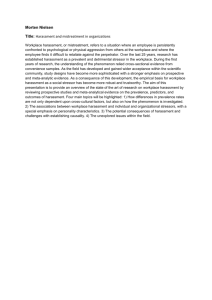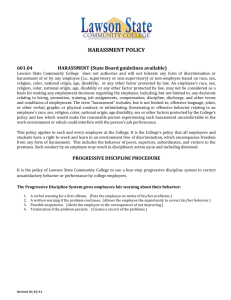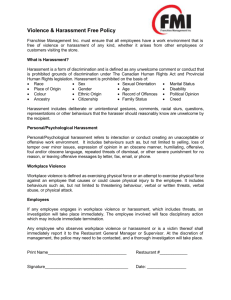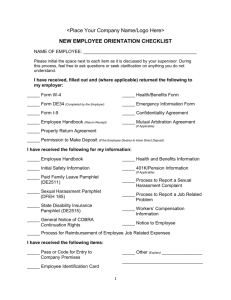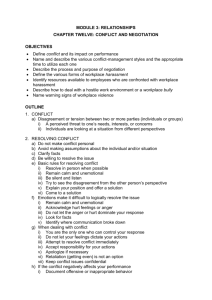Coop Pre-placement - Workplace Harassment Assignment
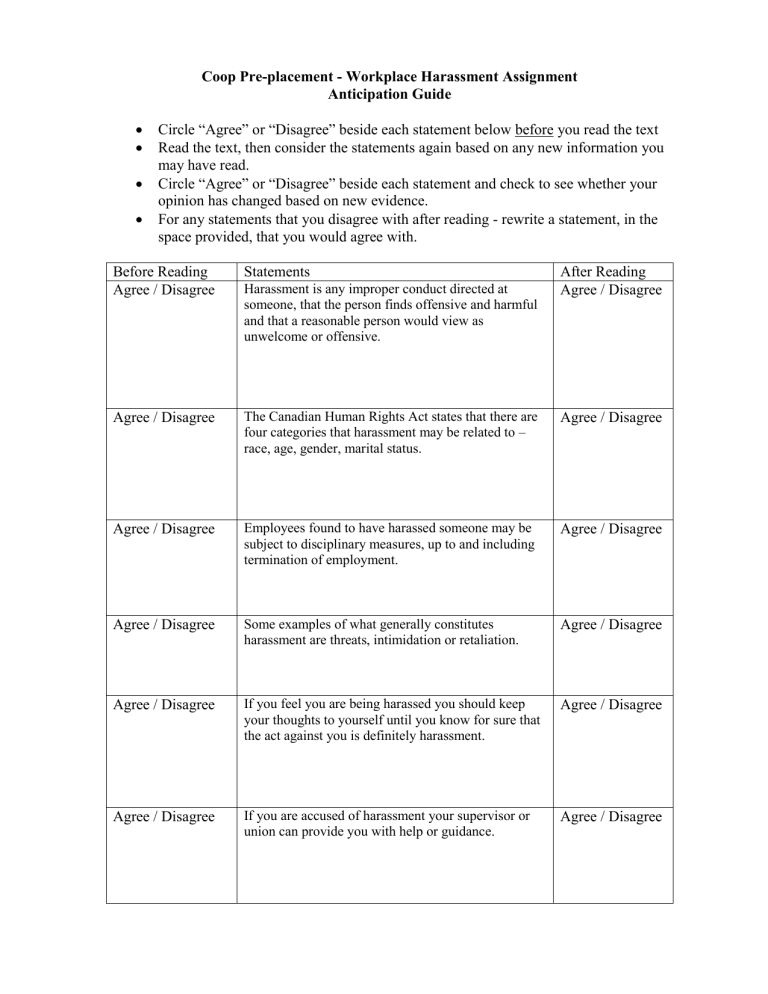
Coop Pre-placement - Workplace Harassment Assignment
Anticipation Guide
Circle “Agree” or “Disagree” beside each statement below before you read the text
Read the text, then consider the statements again based on any new information you may have read.
Circle “Agree” or “Disagree” beside each statement and check to see whether your opinion has changed based on new evidence.
For any statements that you disagree with after reading - rewrite a statement, in the space provided, that you would agree with.
Before Reading Statements
Agree / Disagree Harassment is any improper conduct directed at someone, that the person finds offensive and harmful and that a reasonable person would view as unwelcome or offensive.
Agree / Disagree The Canadian Human Rights Act states that there are four categories that harassment may be related to – race, age, gender, marital status.
Agree / Disagree Employees found to have harassed someone may be subject to disciplinary measures, up to and including termination of employment.
Agree / Disagree Some examples of what generally constitutes harassment are threats, intimidation or retaliation.
Agree / Disagree If you feel you are being harassed you should keep your thoughts to yourself until you know for sure that the act against you is definitely harassment.
Agree / Disagree If you are accused of harassment your supervisor or union can provide you with help or guidance.
After Reading
Agree / Disagree
Agree / Disagree
Agree / Disagree
Agree / Disagree
Agree / Disagree
Agree / Disagree
Harassment in the workplace
Awareness, communication and early intervention are key to a harassment-free work environment. Everyone has a personal responsibility in making this happen.
As employer of the Public Service, the Treasury Board is committed to providing a work environment free of harassment, where all persons in the workplace are treated with respect and dignity.
What is harassment?
Harassment is a complex matter. Generally speaking, it is any improper conduct directed at someone, that the person finds offensive and harmful and that a reasonable person would view as unwelcome or offensive.
Harassment can be any objectionable act, comment or display that demeans, belittles or causes personal humiliation or embarrassment, or any act of intimidation or threat. It includes harassment prohibited by the
Canadian Human Rights Act , which consists of harassment related to race, national or ethnic origin, colour, religion, age, sex, sexual orientation, marital status, family status, disability and pardoned conviction.
Harassment can come from a colleague, a supervisor, a subordinate, another person in the workplace or from a member of the public.
For the official definition of harassment, please refer to the Treasury Board Policy on the Prevention and
Resolution of Harassment in the Workplace.
What is the policy?
Everyone is entitled to a harassment-free workplace. Harassment is unacceptable and will not be tolerated.
Employees found to have harassed someone may be subject to disciplinary measures, up to and including termination of employment.
Some examples of what generally constitutes harassment
Serious or repeated rude, degrading or offensive remarks, such as teasing about a person's physical characteristics or appearance, put-downs or insults.
Displaying or sending sexist, racist or other offensive pictures, posters or e-mails.
Sexual harassment, such as unwelcome social invitations with sexual overtones or flirting.
Threats, intimidation or retaliation.
The proper exercise of managerial and supervisory rights and responsibilities is not harassment .
Harassed?
If possible, make your disapproval or unease known as soon as possible to the person who offended you, in an attempt to resolve the situation.
If this doesn't work or if you are unable to speak directly with that person, talk to your supervisor or someone else in authority.
Review the Treasury Board Policy on the Prevention and Resolution of Harassment in the
Workplace.
Your supervisor, the person designated by your department or organization, or your union representative can provide help or guidance.
Management is expected to address the situation and to use appropriate measures to resolve the problem.
Accused of harassment?
If someone informs you that your conduct is offensive, take it seriously and attempt to resolve the problem with that person.
Review the Treasury Board Policy on the Prevention and Resolution of Harassment in the
Workplace.
Your supervisor, the person designated by your department or organization, or your union representative can provide help or guidance.
Management is expected to address the situation and to use appropriate measures to resolve the problem.
Take note
Everyone in the workplace is expected to act towards others in a respectful and professional manner.
It is in everyone's best interest to resolve harassment situations at the outset.
Supervisors and managers who are aware of harassment in the workplace are expected to address the situation promptly, whether or not a complaint has been filed.
A harassment complaint is a serious matter. It will be dealt with promptly and in a confidential manner.
